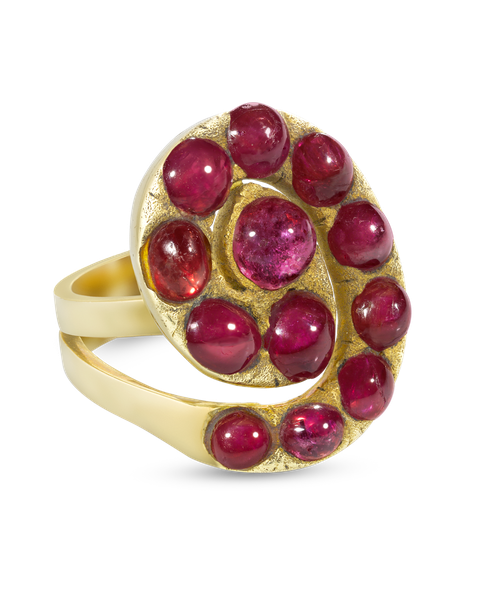There's a Reason Everyone is So Obsessed with Alexander Calder’s Jewelry Right Now
Consider it wearable contemporary art.
Original article written by Jill Newman for Town & Country Magazine.
At the Post-War & Contemporary Art sale at Christie's last week, paintings weren’t the only works that sold beyond their estimates: An Alexander Calder woven brass bracelet sold for $250,000, nearly four times the low estimate. At Sotheby’s Contemporary Art sale, also last week, a Calder brass necklace sold for $226,800, and just six months earlier, in the middle of the pandemic, the auction house sold a silver wire necklace by the artist for $612,900 (the presale estimate was $220,000-$300,000).
What’s all the fuss about this primitive brass and silver jewelry? Obviously, Calder’s name commands attention, but his bold, raw aesthetic is especially attractive right now to women who want statement jewels that aren’t showy—but still have distinctive style. His jewels also appeal to the exploding number of young art collectors who are just discovering Calder’s playful and exuberant aesthetic. This is hardly a surprise given the artist’s early jewelry devotees included Peggy Guggenheim, Angelica Houston, Georgia O’Keefe, and Mary Rockefeller, who were all known for their adventurous senses of style. These women could afford any jewels, but they made sure to have Calder pieces in their collections.
“In my view, Calder is the greatest artists’ jeweler,” says Louisa Guinness, whose London gallery specializes in jewelry made by artists. “He was passionate about his jewelry, he made the pieces himself, and he did it because he loved it.”
Guinness predicts that Calder’s jewelry will continue to rise in value because it is undervalued when compared to his mobiles and sculpture. “Like everything in the art world, the very best is in high demand and there is a limited supply of Calder’s jewelry,” she said. Also, clients are seeking more unique, interesting, and personal pieces. “Women are more confident in their style choices and have greater appreciation of art, and word is spreading in the fashion world about artists’ jewelry.”
Calder, who died in 1976, began making jewelry in the early 1930s for his wife and close friends using mainly brass and silver, which he hammered in large flat swirls and layered in three-dimensional necklaces. The bracelet made of handwoven brass wire that sold at Christie’s last week, for example, also revealed the artist’s interest in African jewelry, which is traditionally made with woven metal wire. His wire pieces made it easy to create large-scale designs that were lightweight and not overpowering. Calder made some 1,800 jewelry pieces throughout his life.
Calder also took on personal jewelry commissions, including an engagement ring he made for Catherine Higgs Milton in 1964, which the antiques dealer M.S. Rau is selling for $138,500. The Miltons were Calder’s neighbors in Connecticut, and when Albert Milton intended to propose to Catherine, Calder set the family’s collection of Burmese rubies in a gold swirl design. The ring, which is being offered for sale by Higgs Milton herself, is a rare example of the artist’s use of gemstones and gold.
So where can you purchase Calder pieces now? The Stephen Russell boutique on Madison Avenue in New York City is one of the few places that has been a consistent source of Calder jewelry for more than 25 years. It currently has two of the artist’s most desirable hammered large-scale necklaces in its window, shown alongside coveted jewelry from Suzanne Belperron, Art Deco designs from Cartier, and top-quality diamonds. And they just acquired a rare Calder swirl ring in gold for the store.
“We love the juxtaposition of Calder’s raw artistry contrasted with jewels by Cartier and Van Cleef & Arpels,” explains co-owner Russell Zelenetz. “It’s unusual to see them together, but we love it.” He says it’s increasingly hard to find Calder pieces and the demand is growing. “Whoever buys it tends to be a very confident woman,” he says. “It’s the no-show show because you have to be in the know to know what it is, and that’s part of the mystique.”









